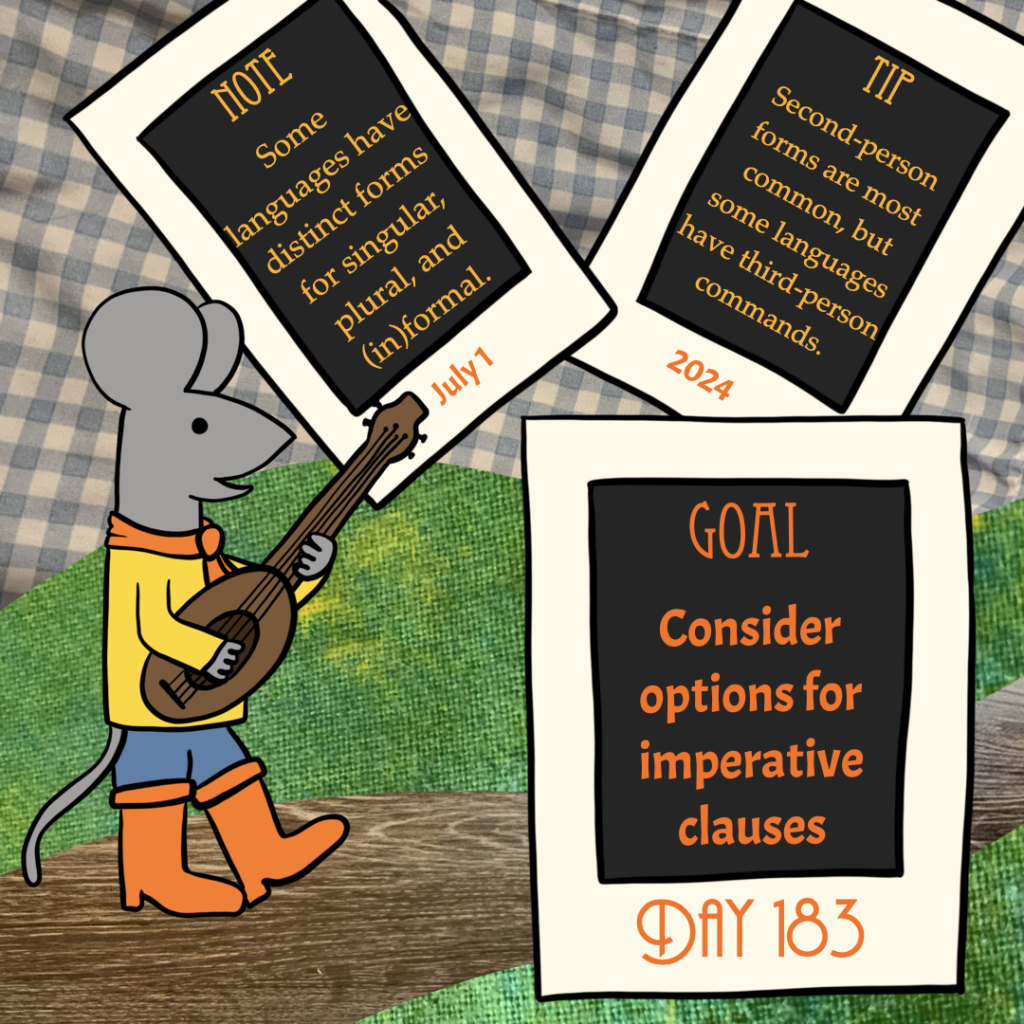
Goal: Consider options for imperative clauses
Note: Some languages have distinct forms for singular, plural, and (in)formal.
Tip: Second-person forms are most common, but some languages have third-person commands.
Work focus: Learn/Brainstorm/Try
Today’s focus shifts to imperative clause structures! Take some time to explore how a variety of languages form imperative clauses to get some inspiration for your own language. In general, the addressee of an imperative (i.e. a command) is a second-person referent (i.e. you, y’all). Languages differ in the inflectional forms that can be used to specify who the intended referent (or referents) is, including…
- singular versus plural forms
- formal versus informal forms
- third-person versus second-person forms
Third-person imperatives are less common than second-person forms, but they are an option for you to consider.
Tomorrow you will be drafting a plan for imperatives in your own language, so have some fun exploring today to be inspired for options you might consider for your conlang.
